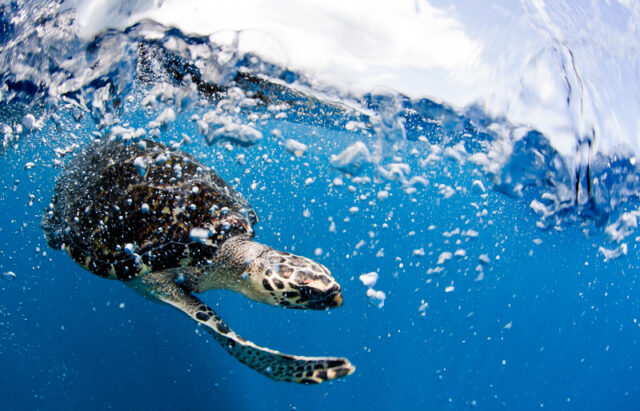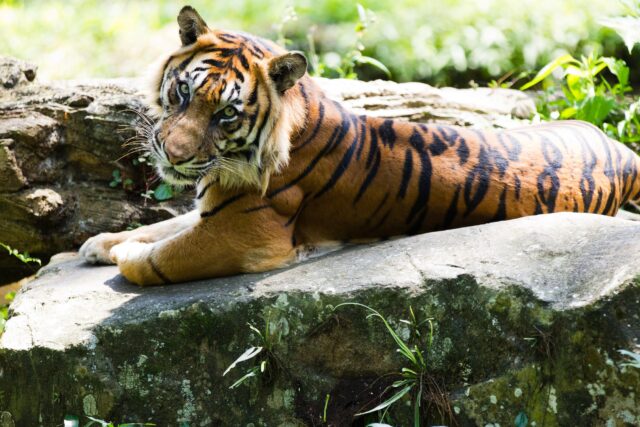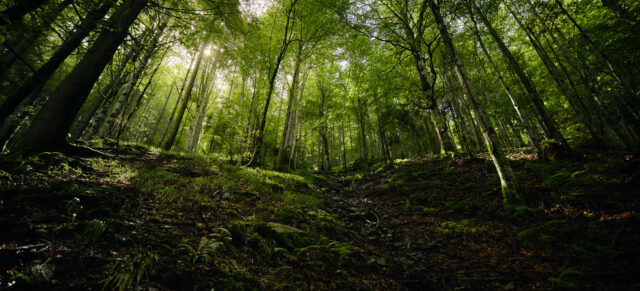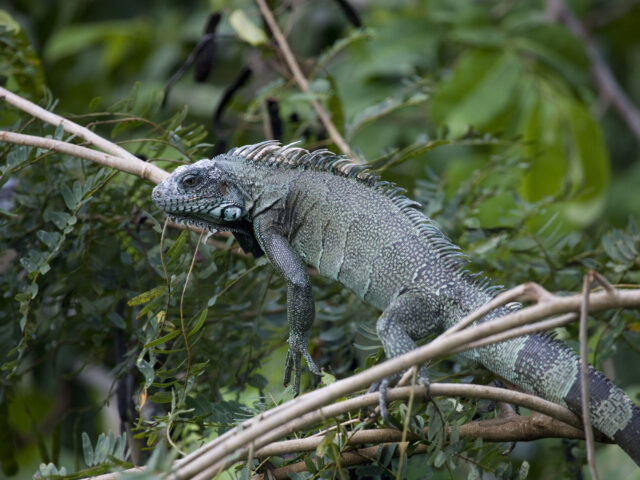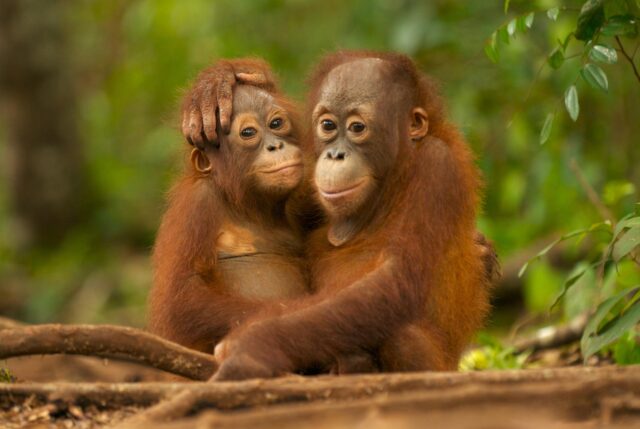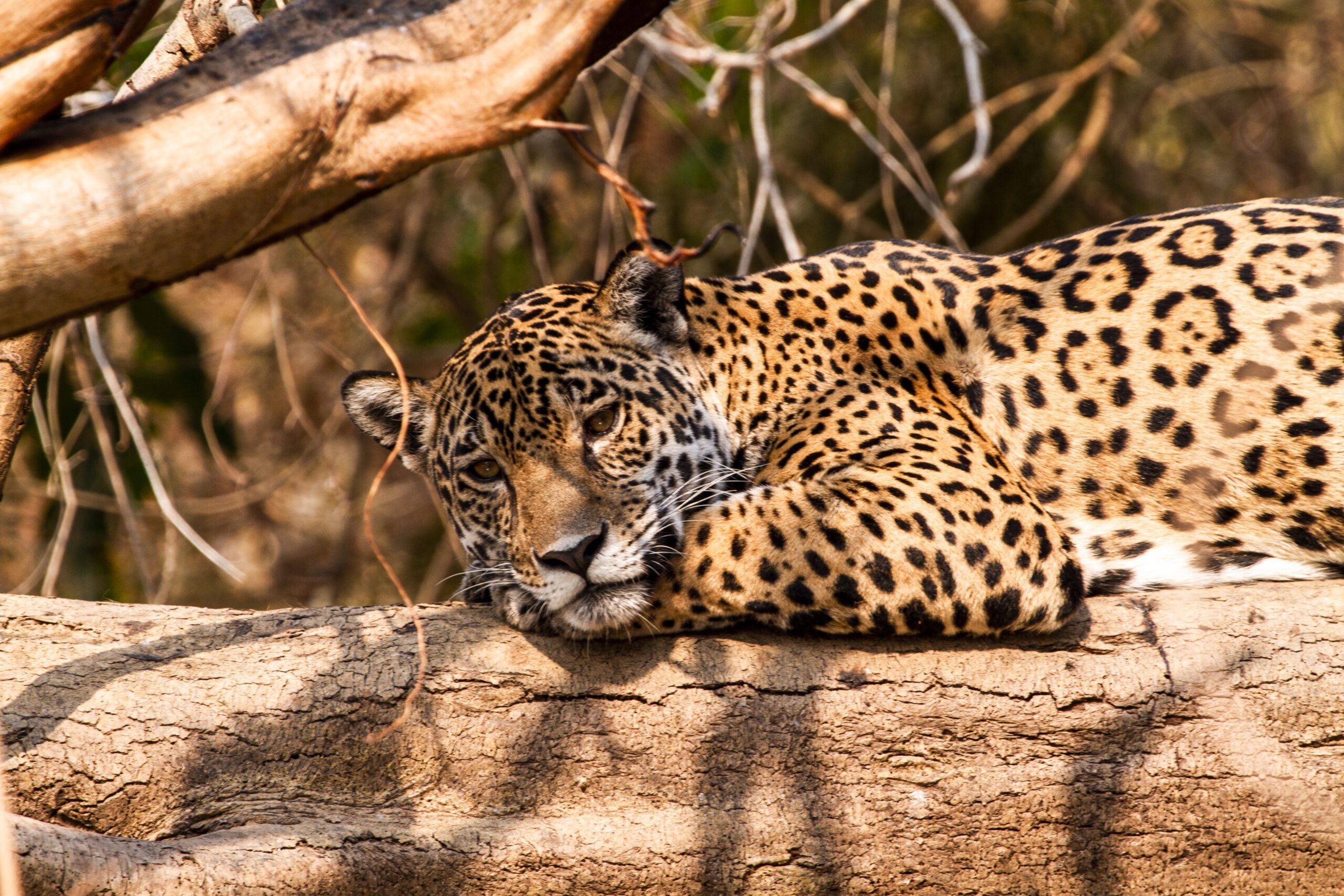
Jaguars are majestic animals that have captivated people for centuries. Yet, like many species, these big cats are facing unprecedented challenges in a changing world. Conservation efforts give jaguars a better chance to survive in the wild. But they still need our support, particularly in the Amazon rainforest.
Here are 10 fascinating facts about jaguars to inspire you.
They are the third-largest big cat on the planet
Jaguars may not be as big as tigers and lions, but they are still the third-largest big cat on the planet. A male jaguar can weigh up to 136 kg and has stocky build and powerful jaws to take down large prey, like caimans, tapirs, and capybaras. These large cats also combine raw power with remarkable agility, allowing them to climb effortlessly, swim expertly, and navigate through dense jungle terrain undetected.
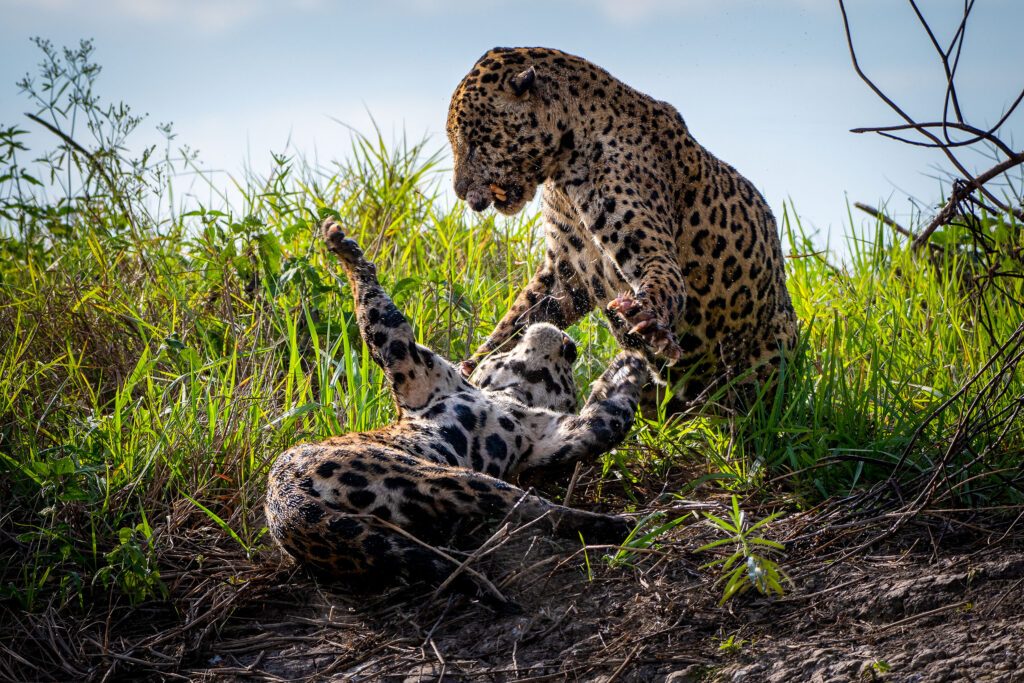
Historically, jaguars were found across a vast territory right up to the U.S.
In the past, jaguars were found across the southern United States through Mexico, Central America, and deep into South America as far as northern Argentina. Today, their range is roughly half of their historical range, restricted mainly to pockets of Central and South America, with the Amazon Basin and Pantanal wetlands serving as their strongholds.
They were deeply revered in Mesoamerican civilisations
In ancient cultures, such as the Maya and Aztec, jaguars were seen as symbols of strength and power. In Aztec society, for instance, elite warriors (“cuāuhocēlōtl”) wore jaguar-like attire, reflecting the majestic cat’s sacred status.
Moreover, archaeological digs at Teotihuacan and the Aztec Templo Mayor discovered jaguar bones in ceremonial caches. They were sometimes accompanied by precious objects like greenstone or obsidian, suggesting jaguars held ritual and ceremonial importance in both Maya and Aztec societies.
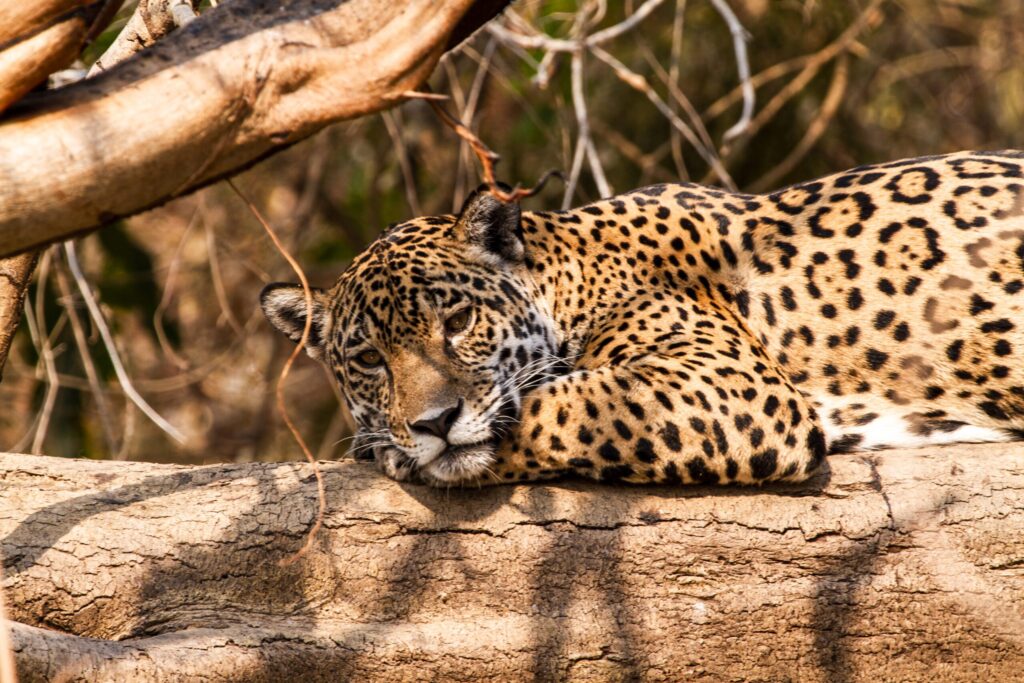
The jaguar’s rosette spots have their own ‘spots’
The jaguar’s black rosettes often feature smaller black spots in the centre, unlike leopards’ rosettes, which generally lack that central dot.
The rosettes on a jaguar are also unique to each individual, with distinct shapes, spacing and small spots inside them. This creates a unique marking, much like a human fingerprint. It also allows researchers to identify and track specific individuals using photographs or camera-trap images instead of invasive tagging or radio collars.
Black jaguars aren’t a different species
Around 10% of jaguars display melanism, appearing almost entirely black with ghost rosettes—faint dark spots that can be seen under bright light. These melanistic jaguars are the same species but may display different activity patterns or behaviours than their spotted counterparts.

Take action to protect jaguars
Greenpeace is campaigning to protect the jaguars' Amazon Rainforest home. Join us and help these amazing creatures thrive.
Jaguars will eat almost anything they can catch
Pound-for-pound, jaguars have the strongest bite of all big cats, with crushing power that easily pierces through the toughest hides, skins or shells. As a result, they have an impressively diverse diet, from deer and monkeys to caimans and turtles. In fact, jaguars have been documented preying on over 80 different animal species in the wild.
Jaguars rarely interact with humans
Despite their fearsome reputation, jaguars are generally elusive and prefer to avoid humans. Most human-jaguar conflicts happen when these big cats resort to hunting livestock and are killed in retaliation. This often occurs in areas where rainforests have been converted into farmlands, rather than through direct interaction with people.
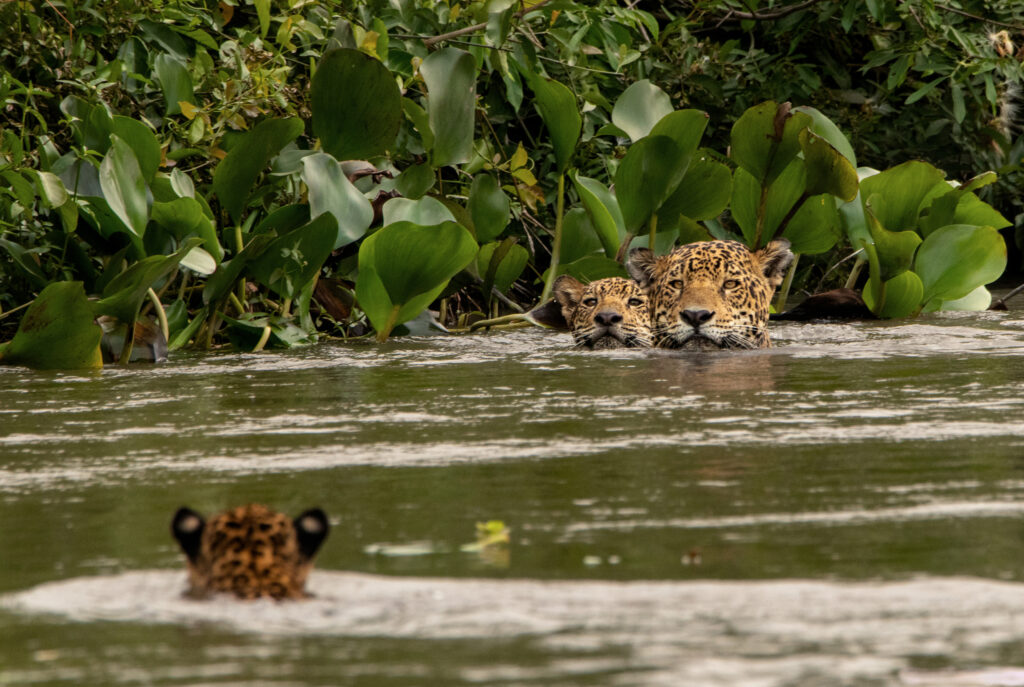
Jaguars don’t mind getting their paws wet
Unlike many cats, jaguars are exceptional swimmers, naturally adapted to aquatic environments. They are often found near water bodies like rivers, lakes and wetlands, where they hunt aquatic prey like fish, turtles and caimans. Jaguars can even dive and fully submerge themselves to hunt prey underwater.
Jaguars are currently listed as Near Threatened on the IUCN Red List of Threatened Species
Jaguars are listed as a ‘Near Threatened’ species currently. But recent assessments suggest they will likely qualify as ‘Vulnerable’ species because their numbers continue to decline in the wild. The exact jaguar population is difficult to estimate, but recent figures suggest estimates to be around 170,000 individuals.
Jaguars are vital to rainforest health
As apex predators, jaguars keep their prey populations in check. So when we lose more jaguars, it causes a ripple effect that alters entire rainforest communities. These majestic big cats are facing mounting pressures from human activities, including deforestation and land conversion for agriculture and grazing, as well as poaching and illegal wildlife trade.
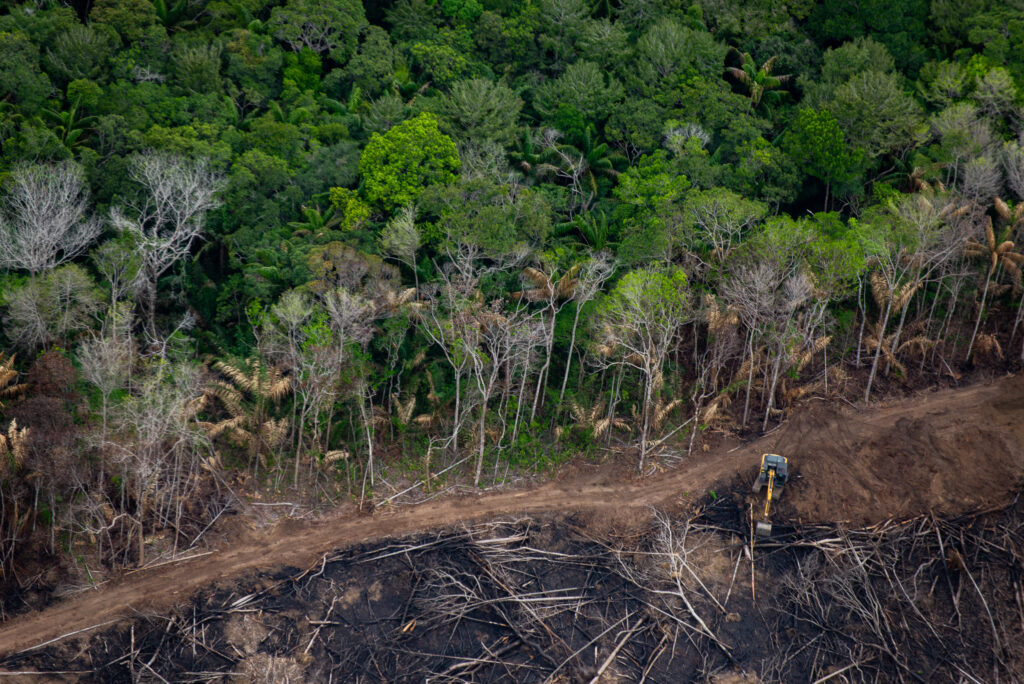
The Amazon rainforest is a crucial refuge for surviving jaguars, but it’s increasingly under threat
Many jaguars live in the Amazon rainforest, where we have long focused our efforts to protect it from the destructive expansion of industrial farming, illegal logging, and cattle ranching. But large-scale clearing of land for beef production and soy feed is still happening. And it has a direct impact on jaguar territories in the Amazon rainforest.
Adult jaguars live and hunt alone, requiring large territories to support their diet and breeding needs. When rainforests are cut down or broken into smaller parts, they restrict jaguar movements and range, making it harder for them to find mates and sufficient prey. This creates more human-jaguar conflict.
Many healthy jaguar populations are found within Indigenous territories. So to protect jaguars, we also need to support Indigenous Peoples‘ rights to their ancestral lands in the Amazon.

